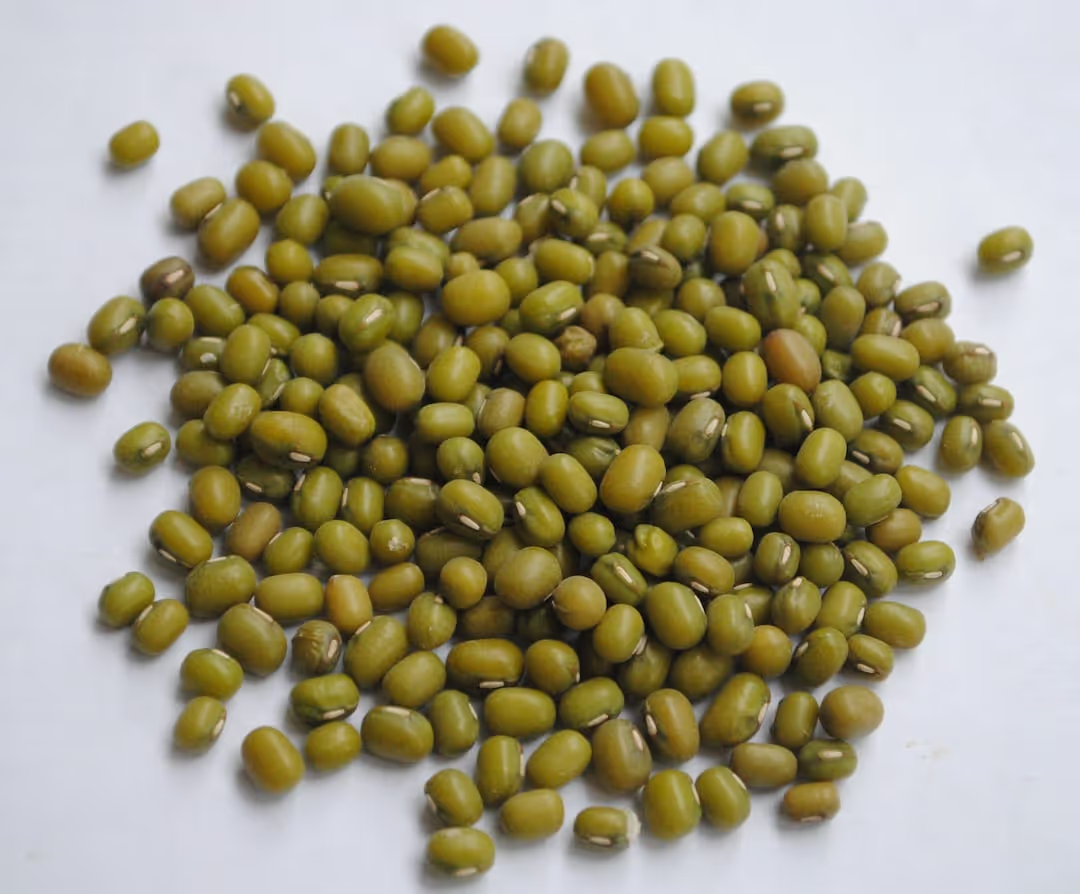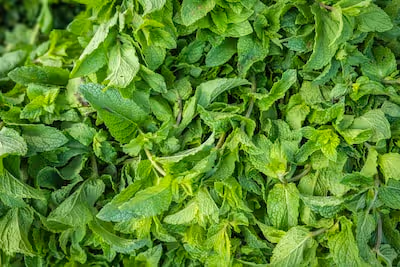Growing Mung Beans: A Simple Guide for Healthy Harvests

Growing Mung Beans
Growing mung beans packs nutrition and flavor into minimal space, sprouting easily on a sunny windowsill or backyard plot. Quick to germinate, ready to harvest in weeks, and thriving even in novice care, growing mung beans rewards gardeners with fresh, crisp sprouts ideal for salads, stir-fries, or snacks. Discover below how simple steps, modest watering and straightforward tips can turn a handful of beans into an abundant edible crop.
Cheatsheet: Mung Beans for Quick, Nutritious Harvests
🌱 Choosing & Preparing Seeds
- Use certified, untreated seeds for best yields.
- Soak seeds 4–6 hours to speed sprouting.
☀️ Best Location & Timing
- Plant after last frost, soil 65–90°F (18–32°C).
- Choose full sun (6+ hours daily).
🪴 Soil & Spacing
- Loose, well-drained soil, pH 6.2–7.2.
- Add compost for nutrients.
- Sow seeds 1 inch (2.5 cm) deep, 3–4 inches (7–10 cm) apart.
- Rows 18–24 inches (46–61 cm) apart.
💧 Water & Care
- Keep soil evenly moist, not waterlogged.
- Mulch to retain moisture, suppress weeds.
- No fertilizer needed if soil is fertile.
🐛 Pest & Disease Management
- Watch for aphids, beetles. Use row covers early.
- Rotate crops yearly to reduce soil-borne disease.
🌾 Harvest & Storage
- Harvest pods 60–70 days after planting, when green and plump or dry on vine for storage beans.
- Dry pods if saving seeds.
- Store beans airtight, cool, dark.
🥗 Health & Nutrition
- Mung beans: Rich in protein, folate, fiber, iron.
- Sprouts in 3–5 days; boost salads and stir-fries.
- Self-sufficiency: Great for protein-rich, homegrown food.
🧰 Tools and Products You’ll Need
- Mung bean seeds
- Compost
- Hand trowel
- Soaker hose or watering can
- Mulch
- Netting or floating row cover (optional, for pests)
- Harvest basket
Step 1: Soak seeds 4–6 hours before planting.
Step 2: Prepare bed with compost; plant seeds 1 inch (2.5 cm) deep, 3–4 inches (7–10 cm) apart, rows 18–24 inches (46–61 cm) apart.
Step 3: Water to keep soil moist; mulch to conserve water and block weeds.
Step 4: Harvest fresh pods in 60–70 days or let them dry for storage beans.
-
Growing Mung Beans: the small legume that pays rent
I plant mung bean, Vigna radiata, after early lettuce or garlic to cash in on a fast crop and tidy up the soil. It behaves like a polite tenant, leaves nitrogen behind, and cooks up like a weekday hero.
Growing Mung Beans shines in heat, poor fertility, and tight rotations. The trick is timing, seed quality, and a light hand with water.
Sowing window, soil, and heat
Direct sow once soil holds at 65 to 70 F, 18 to 21 C, and frost is gone. Warmth drives uniform emergence and quick nodulation.
Pick full sun and a loose, well-drained bed with pH 6.2 to 7.2. I rake in a thin layer of mature compost and skip high-nitrogen fertilizer.
Inoculation matters for first-time beds. Dust seed with the cowpea-mungbean rhizobia group so roots form pink nodules that fix nitrogen.
Most extension guides note a 10 to 20 percent yield bump with proper inoculation. NSW Department of Primary Industries spells this out in its mungbean production notes.
Spacing, depth, and layout
Plant 1 inch deep, 2.5 cm. Space 3 to 4 inches apart, 8 to 10 cm, in rows 18 to 24 inches, 45 to 60 cm.
For dense sprout seed production, I tighten rows to 12 inches, 30 cm, and thin later. For dry beans, I keep air moving to fight mildew.
Water and feeding
Give 0.75 to 1 inch, 19 to 25 mm, of water per week once flowering starts. Early on, keep it drier to prevent seed rot.
Avoid heavy nitrogen that suppresses nodulation. If plants look pale before flowering, I side-dress with a light compost tea instead of salt fertilizer.
Phenology and daylength
Many mung beans are short season, 60 to 90 days, yet some lines show daylength sensitivity. In my mid-latitude plots, midsummer sowings set pods more evenly than late spring or late summer.
Succession sow every 10 to 14 days for a steady pick. Late plantings ripen during shorter days and can reduce shattering in heat spikes.
Flowering, pollination, and shattering control
Mung bean self-pollinates yet still attracts small bees. Calm, warm mornings give the best pod set in my fields.
Pods ripen unevenly and can split. I reduce losses by harvesting at 80 to 90 percent color change and finishing the dry-down under cover.
Harvest choices: sprouts, green pods, shellies, and dry beans
- Sprouts: 3 to 5 days from seed in a jar at 68 to 72 F, 20 to 22 C, rinse 2 to 3 times daily.
- Green pods: 60 to 70 days, picked when pods are filled, bright, and still tender.
- Shellies: beans full-sized yet not fully dry, a short July luxury.
- Dry beans: 80 to 100 days depending on variety and heat, harvest when most pods turn black or brown.
For dry beans, I cut whole plants at dawn and lay on tarps to crisp for 2 days, then thresh by foot or in a clean barrel. I finish at 12 to 13 percent moisture, then freeze for 72 hours to stop bruchids.
“Global mung bean yields hover around 0.6 to 1.0 t/ha, with improved varieties and good management reaching 1.5 t/ha.” World Vegetable Center technical briefs and FAO reports echo this range.
Storage and food safety
Dry beans store 12 months in airtight bins with oxygen absorber or bay leaves as a deterrent. I keep jars in a cool, dark closet near 60 F, 15 C.
Sprouts taste clean but carry risk. FDA advises high-risk groups to avoid raw sprouts, so I steam them for 60 seconds or cook in a quick stir-fry.
Pests and diseases, handled the calm way
- Aphids and whiteflies: blast with water early morning, release lacewings, and avoid overfeeding nitrogen.
- Bean fly: cover with insect net from emergence in regions where it is common, and harden plants with lean watering.
- Bruchids in storage: freeze seed, use sealed containers, and keep storage cool.
- Powdery mildew and Cercospora: widen spacing, prune weeds, and plant resistant lines when available.
- Yellow mosaic virus: control whiteflies, rogue the first sick plants, and rotate away from legumes.
I rotate 3 years between legume beds to dodge root rots. Mulch thinly to curb splash and conserve moisture.
Fertility and rotation payback
Mung bean fixes nitrogen with native or applied rhizobia. After harvest, I chop the residue and dig in lightly, then follow with fall brassicas that feed hard on that nitrogen pulse.
Soil tests confirm a modest boost in available N and better crumb structure. The crop also breaks cereal disease cycles between small grains.
Variety short list that has earned space in my beds
- Berken: fast, compact, excellent for sprouting seed, reliable in short seasons.
- Crystal: widely grown in Australia, pods set evenly, good standability in wind.
- Jade-AU: strong emergence and pod quality in heat, nice for dry beans.
- VC lines from WorldVeg like VC1973A: sturdy performers in hot, humid sites.
- Local landraces: ask seed savers, many handle erratic rains better than catalog types.
Check regional trials from university extensions and grower groups for disease scores and lodging notes. I run side-by-sides in 10-foot, 3-meter, strips and pick winners on pod fill and uniformity.
My field method, step by step
- Clear the bed, broadfork once, and rake smooth.
- Dust seed in a paper bag with rhizobia and a splash of sugary water for stick.
- Seed at 8 to 10 pounds per acre, 9 to 11 kg per hectare, or a light handful per 10 feet, 3 meters, of row.
- Water once to settle, then hold off until cotyledons show.
- Hoe weeds at day 10, then mulch thin with straw.
- Irrigate during bloom, then ease off near final dry-down.
- Harvest early morning, dry on tarps, thresh, winnow with a box fan, then store.
Sprouting at home that tastes clean and sweet
I sanitize jars, use mesh lids, and rinse seed in a 3 percent vinegar bath for 2 minutes before the soak. Then I soak 8 hours, drain, and set the jar at a 45 degree angle out of sun.
Rinse two or three times a day until sprouts push the lid. I chill them promptly to slow respiration and keep crunch.
“Cooked mung beans bring roughly 14 g protein and 15 g fiber per cup.” USDA FoodData Central lists these ballpark values for plain cooked beans.
Soil physics and mung bean roots
Roots explore shallow layers first, then chase water down if the profile is open. A single pass with a broadfork or a cover crop before spring makes a huge difference in August heat.
Where clay rules, I hill rows slightly to shed water. Good drainage beats any fungicide in my fields.
Companions and neighbors
Basil and coriander stay polite, attract hoverflies, and leave space. Avoid sharing space with other legumes that host the same viruses and bruchids.
After mung bean, I love planting napa cabbage, fennel, or fall carrots. The leftover nitrogen keeps them sprinting through shorter days.
Buying guide and practical kit for Growing Mung Beans
- Seed: look for 90 percent germ or better, food-grade for sprouts, field-grade for outdoor rows.
- Inoculant: select the cowpea-mungbean group, fresh season and stored cold.
- Mesh lids and wide-mouth jars: stainless or BPA-free for daily rinsing.
- Insect netting: 0.8 mm mesh keeps whiteflies out without chemicals.
- Moisture meter or a simple bite test: beans that crack, not bend, are ready for storage.
For larger plantings, a small screen for winnowing saves hours. A shaded drying rack prevents sun-scorch on green pods.
Numbers gardeners ask me for
- Seed rate backyard: 1 to 1.5 ounces per 100 square feet, 3 to 4 g per square meter.
- Expected dry yield: 0.3 to 0.5 pound per 10-foot row, 0.45 to 0.75 kg per 10-meter row, with good care.
- Water budget in hot spells: 1 inch per week, 25 mm, split in two irrigations.
- Germination sweet spot: soil 75 F, 24 C, sprouts within 3 to 5 days.
Anecdotes from hot summers and heavy rains
One July, a thunderstorm split half my pods, so I started cutting whole plants at first color and drying under a carport. Losses dropped by half and the flavor improved.
Another season, overfeeding with nitrogen gave me lush vines and few pods. I learned to trust the nodules and the microbes, and the next crop paid rent on time.
What the specialists say, and why I agree
World Vegetable Center calls mung bean a short-duration legume that fits between cereals and restores soil, a line I have proven across rotations with garlic, corn, and brassicas. University extension bulletins from Florida, Queensland, and California echo the same planting temps, spacing, and inoculation guidance I use.
FDA reminders on sprout safety track with my kitchen habits, rinsing and cooking as needed. USDA nutrition tables match what I taste in a bowl of mung dal after a field day, clean protein and steady energy.
Frequently Asked Questions About Growing Mung Beans
What is the ideal soil type for mung beans?
Mung beans flourish best in well-draining, loamy soils with a pH between 6.2 and 7.2. Soil amendments with compost or aged manure before planting enhance growth conditions and improve yield.
How much sunlight do mung beans require?
For optimal growth, mung beans thrive under full sun exposure, ideally receiving at least 6 to 8 hours of sunlight daily. Partial shade may impact bean production negatively.
When is the optimal planting time for mung beans?
Plant mung beans after the last frost date of spring, once soil temperature consistently stays above 65°F (18°C). Warmer soil encourages rapid germination and vigorous plant development.
What is the recommended watering schedule for mung bean plants?
Water mung beans regularly, aiming for consistently moist but not waterlogged soil. Typically, providing approximately 1 inch (2.5 cm) of water per week—including rainfall—is sufficient. Monitor soil moisture closely during hot or dry periods.
Do mung bean plants need fertilizer during growth?
Mung beans typically do not require heavy fertilization due to their ability to fix nitrogen from the atmosphere. However, applying a balanced, low-nitrogen fertilizer at planting time enriches the plants' overall nutrient environment.
When and how are mung beans best harvested?
Harvest mung beans when pods turn dark brown and become dry, typically between 90 to 120 days after planting. To harvest, remove pods gently by hand or trim stems carefully, then dry further before shelling to store beans for future use.
What pests or diseases commonly affect mung beans?
Mung beans may face challenges from aphids, bean beetles, and powdery mildew. Practice crop rotation, maintain proper spacing, and remove affected plants promptly. Using organic pest control measures like neem oil spray significantly reduces these issues.
Growing Mung Beans is about keeping things honest: good soil, steady water, and a watchful eye. These beans reward you with crisp sprouts or tender pods in no time, making them perfect for impatient cooks and gardeners alike. Remember, a little patience at the start—soaking, sowing, and thinning—pays off with a healthy harvest that’s hard to beat for flavor or nutrition. If you’re hooked on homegrown beans, you might also enjoy trying your hand at azuki beans or edamame. Keep it simple, trust the process, and let your garden feed you well.
The Prepper's Guide to Growing Mung Beans for Reliable Nutrient Security
Why Mung Beans Belong in Prepper Gardens
- Rapid germination: Sprouts edible within 3–5 days; mature beans harvestable in 50–65 days.
- High nutritional yield: 1 cup (200 grams) cooked beans provides roughly 14 grams protein, 15 grams fiber, iron, folate, and essential amino acids.
- Drought-tolerant and adaptable: Thrives between 68–86°F (20–30°C), needs minimal water post-establishment.
- Compact plants (around 24 inches/60 cm tall), ideal for limited spaces and container gardening.
Seed Storage Essentials for Preppers
- Store dry mung bean seeds in airtight containers, cool and dark areas (below 60°F/16°C, humidity under 50%) to maintain germination viability for 3–5 years.
- Regularly rotate seed supply yearly to ensure consistent sprouting capability.
Reliable Preservation and Storage Methods
- Dried Beans: Air-dry harvested beans; store in sealed containers, away from moisture, for 5+ years shelf-life.
- Sprout Preservation: Sprout beans as needed; refrigerate harvested sprouts in airtight containers or vacuum packs, remaining fresh 5–7 days.
- Cooking and Canning: Pressure-can cooked mung beans according to USDA processing guidelines (90 minutes at 10–15 psi or 69–103 kPa) for safe storage 1–2 years.
- Dehydration: Dehydrate cooked beans at 130°F (54°C) until brittle; store dehydrated beans in vacuum-sealed containers—lasts 5–10 years.
Maximizing Yield During Limited Resources
- Succession planting: sow mung bean seeds every 2–3 weeks for continuous supply.
- Grow beans among nitrogen consumers (e.g., carrots, cucumbers, peppers) to improve soil fertility and crop yield.
- Recycle gray-water cautiously: use mildly soapy water (biodegradable soaps only) for irrigation to extend limited water resources.
Find out which plants will thrive in your garden!
Answer a few fun questions and get custom plant recommendations perfect for your space. Let’s grow something amazing together!

start your season





